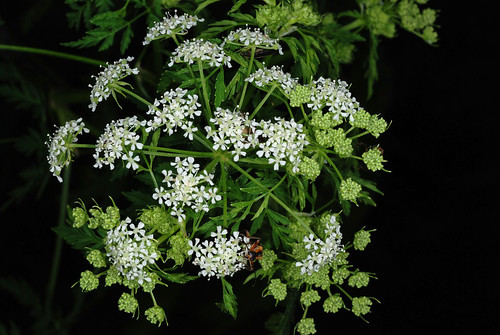
Recently the PLANTS website crossed a milestone with the uploading of its 50,000th image. The database, managed by the National Plant Data Team at the USDA Natural Resources Conservation Service’s East National Technology Support Center, hosts images of plants that grow in the U.S. and its territories.
The PLANTS site is one of USDA’s most frequently visited websites.
Besides images, PLANTS provides basic information on plants, including scientific names and distribution. It is used worldwide by scientists, educators, conservationists, students, farmers, horticulturists and others. All of this information assists people in identifying plants with the correct scientific names.
The correct identification of plants can be a serious business. For example, farmers and gardeners need to be able to properly identify weeds so they can take the appropriate steps to control them. Plant identification could even mean the difference between life and death. For example, edible parsley (Petroselinum crispum) and carrot (Daucus carota) are closely related and are similar in appearance to water hemlock (Cicuta maculata) and poison hemlock (Conium maculatum), two species that can be fatal if eaten.

The photos in the database have come from various sources, with many submitted by members of the public. Using the Image Gallery, one man was able to get a houseplant that had been in his family since the early 1900s properly identified as the cactus Rhipsalis. A woman from Alabama was able to identify a grass species, blackseed speargrass (Piptochaetium avenaceum), that grew in her yard and was injuring her dog with hard, sharp grains that penetrated the dog’s skin.
An entomologist with the University of Colorado, who studies leafhoppers that feed on grasses, used PLANTS to familiarize himself with different species of grass commonly known as muhly (Muhlenbergia). The National Plant Data Team provided him with locations for populations of the rare New Jersey muhlygrass (Muhlenbergia torreyana), which resulted in the scientist discovering a new species of leafhopper that he is now naming and describing.
“The relationship between PLANTS, and its users is mutually beneficial,” says Gerry Moore, Team Leader for the National Plant Data Team at the NRCS East National Technology Support Center in Greensboro, N.C.
“Through the resources on the website, we provide technical assistance to users in determining the proper scientific name for a plant, and they provide valuable contributions, such as high quality photos and new location information.”
Visit the PLANTS gallery.
Follow NRCS on Twitter.

